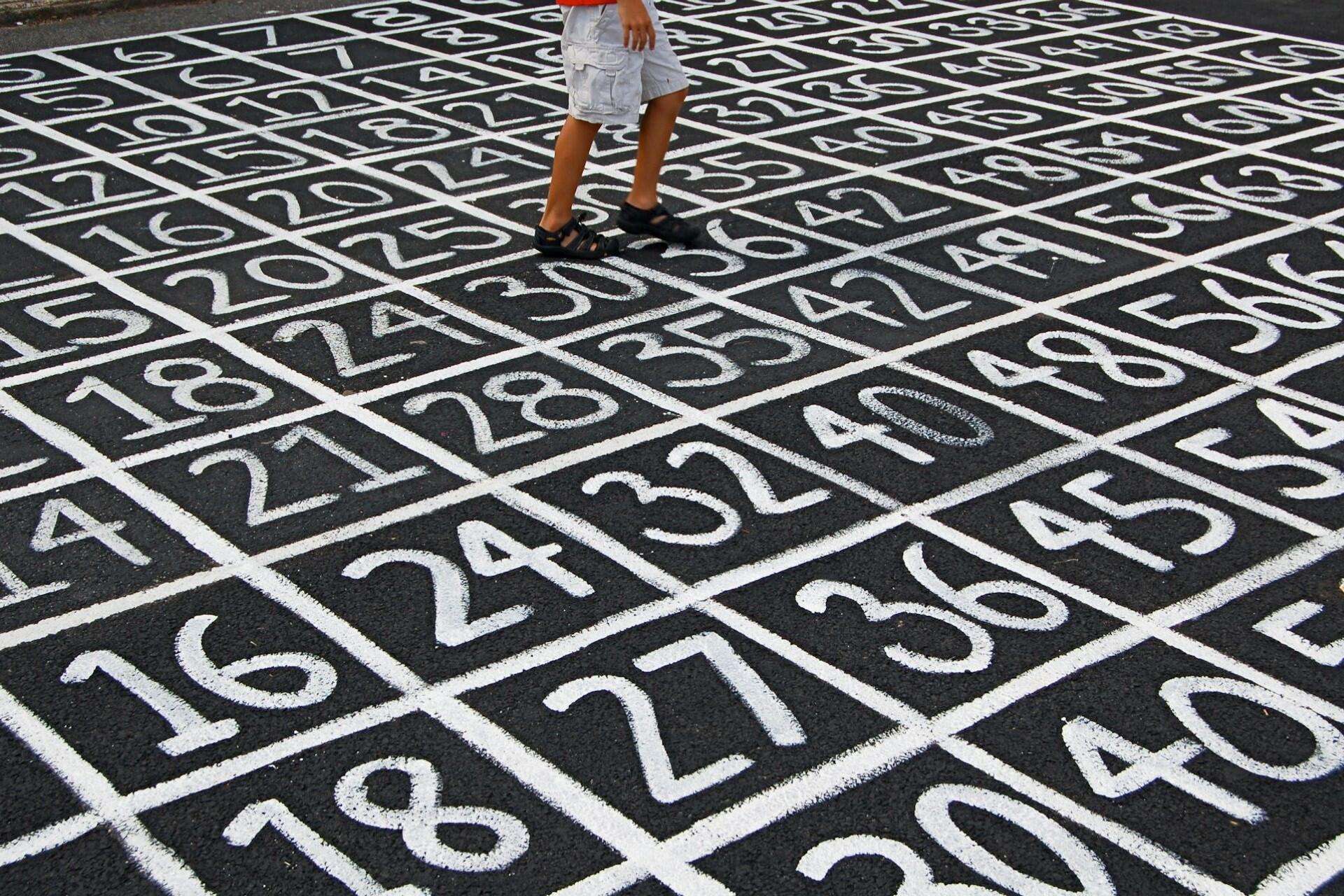Mathematics is not about numbers, equations, computations, or algorithms: it is about understanding.
William Paul Thurston
Every student who sits the Leaving Certificate will have to take two maths papers. Here, we'll focus on Paper 1, the first and most technical part of the exam. Paper 1 tests your understanding of algebra, functions, and numbers. You have to apply mathematical reasoning, manipulate formulas, and interpret problems accurately under timed conditions. Let's look at what's actually on Paper 1, how it's structured and how each topic contributes to your final grade.

Understanding the Structure of Leaving Cert Maths Paper 1
For the Leaving Cert Maths exams, there are two papers. Paper 1 focuses on algebra, functions, and number. It tests problem-solving, logic, and the ability to manipulate formulas rather than just information recall.
Another smart exam strategy for Paper 1 is learning how to handle questions that mix more than one topic. In Section A, for instance, you might find algebra and number combined in a single problem, so it’s important not to skip these multi-topic questions early on. They’re designed to test how well you connect ideas rather than recall isolated facts. Read every question carefully, highlight each part (a), (b), and (c), and plan your timing accordingly so you don’t rush the final section of the paper.
Duration and Format
Section A – 6 short-answer questions (worth roughly 25 marks each)
Section B – 3 long-answer questions (application and reasoning-based)

Since both sections are equally weighted, you should spend about 75 minutes per section. Practise this timing with past papers during your study.
Levels and Grading
Maths is available at Higher, Ordinary, and Foundation levels. Irish and Maths are the only subjects that offer the foundation option. Students at higher level can earn up to 100 points for the H1 grade, which means Pap1 is a significant part of your final score.
Divide your 150 minutes evenly between Section A and B. If you finish early, use the last 10 minutes to check formulas and working-out for common algebraic errors.
available; half of your overall maths grade.
What Topics Are on Leaving Cert Maths Paper 1?
Paper 1 focuses on three main strands from the Leaving Certificate Maths syllabus:
These strands form the foundation of mathematical reasoning. Unlike Paper 2, which tests geometry, trigonometry, and statistics, Paper 1 tests how you can apply rules and logic to solve multi-step problems.
| Strand | Main Topics Covered | Skills Assessed | Typical Question Format |
|---|---|---|---|
| Number | Indices, arithmetic, complex numbers | Accurate manipulation of number forms, simplification | Short-answer calculations and proofs |
| Algebra | Factorisation, quadratic equations, inequalities, modulus, simultaneous equations | Symbolic reasoning, formula manipulation, pattern recognition | Multi-step algebraic problems |
| Functions | Graphs of cubic, exponential, and logarithmic functions; differentiation basics | Interpreting graphs, finding slopes, analysing limits | Graph sketching and applied questions |
of Paper 1 marks typically come from algebra and functions questions.
Both papers are divided into two sections of equal weighting: Section A and Section B. You should keep this in mind when managing your time during the exam. With the same number of marks available, you should consider spending a similar amount of time on each section.
Section A includes six shorter questions, while Section B includes longer questions that apply mathematical concepts to real-world problems. There are three questions in Section B. We highly recommend that every student practise regularly with past papers to improve their time management and understand what two and a half hours feel like under exam conditions.
It also helps to understand what examiners are really looking for on Paper 1. The marking scheme rewards clear presentation and logical method as much as the final answer. Always show every calculation step, label all graphs properly, and round results to a sensible number of decimal places. Even when you make a small error, demonstrating correct reasoning and structure can still earn valuable partial credit, which often makes the difference between one grade band and the next.

The Mathematical Topics on the Leaving Cert Maths Paper 1
Paper 1 tests your ability to reason, apply formulas, and manipulate expressions across three key strands: Number, Algebra, and Functions. While all five strands of maths should be studied in depth by Leaving Cert students by the time they sit each exam, for Paper 1, your focus should be Strands 3, 4, and 5. Let's dive into the strands of the Leaving Cert Maths syllabus to see exactly what they entail and what you should know before you take your Leaving Cert Maths exams.

Strand 3: Number
To effectively study Leaving Cert Maths, you should know all of the strands inside out. You might think that "number" refers to every part of mathematics, but for the Leaving Cert, this involves manipulating and understanding complex numbers. The topics taught in this strand include:
Length, area, and volume calculations
In the number section, the purpose is to expand your knowledge of calculating with complex numbers.
Complex number questions almost always appear in Section A. Practise adding and multiplying them without your calculator to save time.
of the marks come from Number questions.
Strand 4: Algebra
Algebra covers many topics in mathematics, but it's essentially the study of mathematical symbols and the rules for manipulating them. Secondary school students will likely spend a fair amount of time covering algebraic concepts before they start studying algebra for Leaving Cert Maths. Main areas include:

Many students lose marks for skipping brackets in negative expressions. Always write full steps — the marking scheme rewards clear working-out.
of total marks.
Strand 5: Functions
Functions connect algebra and calculus. This strand focuses on interpreting graphs, solving equations graphically, and differentiating simple functions. The Main areas of this strand include:
When sketching, plot the x- and y-intercepts first and label turning points. Neat, labelled graphs often earn full marks.
of Paper 1 marks.
If you want to strengthen your preparation further, review how function questions have appeared in recent exams. Past papers often include tasks such as identifying turning points or interpreting real-world graphs about population growth, temperature change, or motion.
These problems blend algebraic reasoning with graphical interpretation, so practising them trains you to read questions critically. By comparing several past papers, you’ll start to notice repeating patterns that make the real exam feel much more predictable.
Grading and Marking Table
To achieve your ideal result, it's worthwhile to understand how Paper 1's marks work. Since it counts for half of your total maths grade, every mark matters. Here's the official Leaving Cert Maths grading scale with the percentages and CAO points for both Higher and Ordinary levels.
if worth the H1 grade.
Students who achieve a H6 or higher in Higher Level Maths receive a bonus 25 points — meaning a H1 is worth 125 points in total.
| Grade | Percentage Range | Points (Higher Level) | Points (Ordinary Level) |
|---|---|---|---|
| H1 / O1 | 90 – 100 % | 100 | 56 |
| H2 / O2 | 80 – 89 % | 88 | 46 |
| H3 / O3 | 70 – 79 % | 77 | 37 |
| H4 / O4 | 60 – 69 % | 66 | 28 |
| H5 / O5 | 50 – 59 % | 56 | 20 |
| H6 / O6 | 40 – 49 % | 46 | 12 |
| H7 / O7 | 30 – 39 % | 37 | 0 |
| H8 / O8 | < 30 % | 0 | 0 |
Find the Right Maths Tutor to Help You Master Paper 1
If you find one-on-one tutors too pricey, you can always save some money by opting for group tutoring. While group tutoring doesn't offer all the benefits of one-on-one tutoring, some students really enjoy learning in small groups, and there's something to be said for peer learning.

To search more effectively, we recommend that you have a clear idea of your requirements before you start your search and shortlist potential tutors. Many of the tutors on the Superprof website offer the first session for free, so consider trying a few out before choosing the one that's the best fit for you, what you want to learn, and how you like to study.
Once you've found a handful of potential tutors that you'd consider studying with, you can start getting in touch with them and arranging free sessions. If you need more than help in Leaving Cert Maths, you might want to look for tutors offering study skills, help with revision, or general Leaving Cert tutoring.















